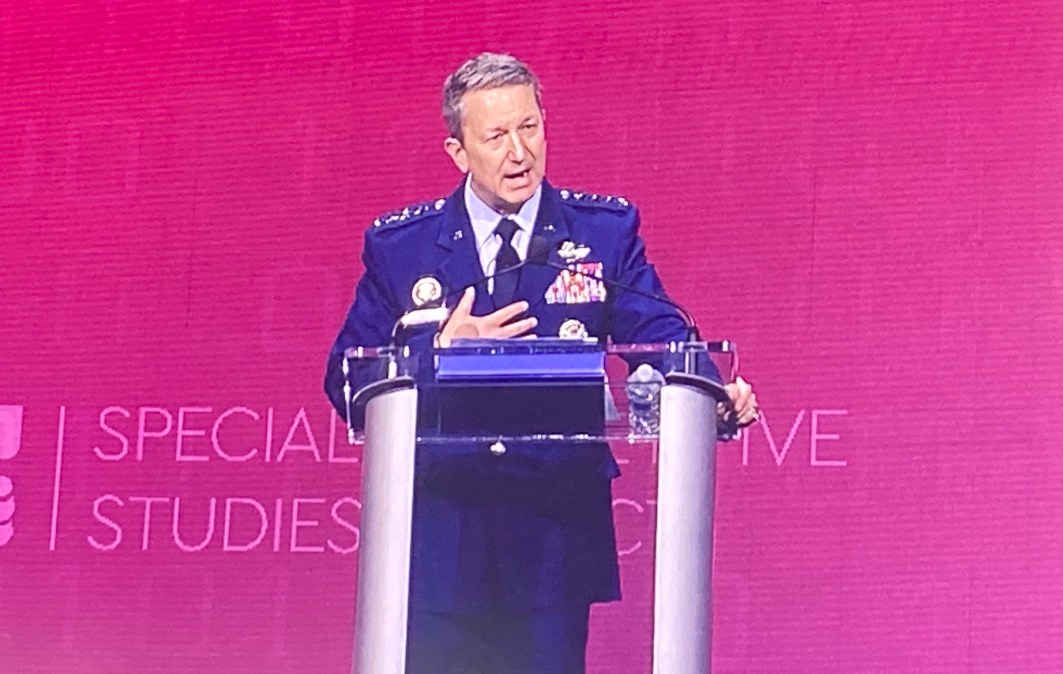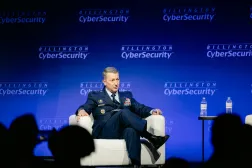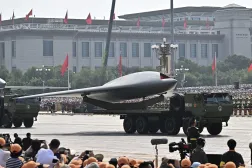At AI conference, Gen. Caine calls for connecting with ‘founders and funders’ of emerging tech

In his most high-profile public address since becoming chairman of the Joint Chiefs of Staff, Gen. Dan Caine told members of industry Wednesday that the Pentagon needs to do more to connect with “founders and funders” of emerging technologies.
During a keynote address at the AI+ Expo in Washington hosted by the Special Competitive Studies Project, which brought together some of the biggest companies in the tech sector as well as smaller vendors with more niche capabilities, Caine suggested legacy systems and old ways of doing business won’t be sufficient for maintaining military superiority in the future.
“Peace in our nation will not be won by the legacy systems that we’ve had or the legacy thinking. It will be determined by the entrepreneurs and innovators and leaders, both in government and out of government, that create overwhelming strength. It will be won by our breakthroughs in AI, cyber, autonomy, space, energy, advanced manufacturing, data, compute, you name it. And we need your help with this,” he said.
New capabilities can improve command-and-control systems, decision-making, mission execution and survivability, he noted. However, the Pentagon needs industry to scale new technology to the point that it becomes a “strategic differentiator.”
U.S. adversaries are sharing tech and intelligence, enabling them to field advanced capabilities faster, he warned.
“And on our end, the barrier for entry for technology, for disruptive tech, is low, but the barrier to government business is high, frankly, too high. And yet, the changing nature and character of warfare is happening right before our eyes. We’ve seen examples of that, most recently as this weekend” when Ukraine attacked Russia’s strategic bombers with cheap drones, Caine said. “We’ve got to go faster, my friends. And that’s mostly, in many cases, on us in … the government. Together, though, we’ve got to be focused on fighting the next war, not fighting the last war, and we need entrepreneurs both in the private sector and in government.”
He added that the Defense Department needs to “do some work” to improve the requirements process and be “better buyers.”
“I know this from my time in the private sector where I tried to sell things to the government when I was an entrepreneur. It’s hard,” Caine said.
He has previously touted his experience in the private sector, including at his confirmation hearing.
After retiring from the military and before his return to service to lead the Joint Chiefs of Staff, Caine was a venture partner at Shield Capital, an advisor for Thrive Capital and a venture partner at Ribbit Capital, among other roles.
The chairman noted that reform efforts are already underway at the Defense Department.
In recent years, the Pentagon has tried to expand its acquisition ecosystem by attracting non-traditional contractors and encouraging investors to back startups working on defense-related technologies.
In his speech Wednesday, Caine pointed to progress made by organizations like the Silicon Valley-headquartered Defense Innovation Unit, which has outposts in major tech hubs across the country and works with nontraditional tech vendors via commercial solutions opening contracting mechanisms.
“We’ve got to drastically scale that capability and that culture inside the joint force, the entrepreneurial culture, which I believe is one of America’s great tools. We’ve got to change our willingness to accept risks, and we’re going to do that,” he said.
The chairman noted that he needs to make sure the joint force is integrated across the globe within the combatant commands and among the services.
“We’ve got to connect them with our interagency allies and partners, including founders and funders, and scale that capability in order to meet the challenges that we need to,” Caine said. “We can do more.”
Caine is a former F-16 pilot who has held a variety of roles throughout his military career, including with the active-duty Air Force, National Guard and the special operations community.
When it comes to relying on advanced tech at the tactical edge, resiliency is key for mission success, he noted.
“My time as a Special Forces officer taught me that two of one thing is [only] one, and one of one thing is none. So we’ve got to be able to build resilient technology [so] that if the power fails or something like that, we’re still capable of doing it,” Caine said.






